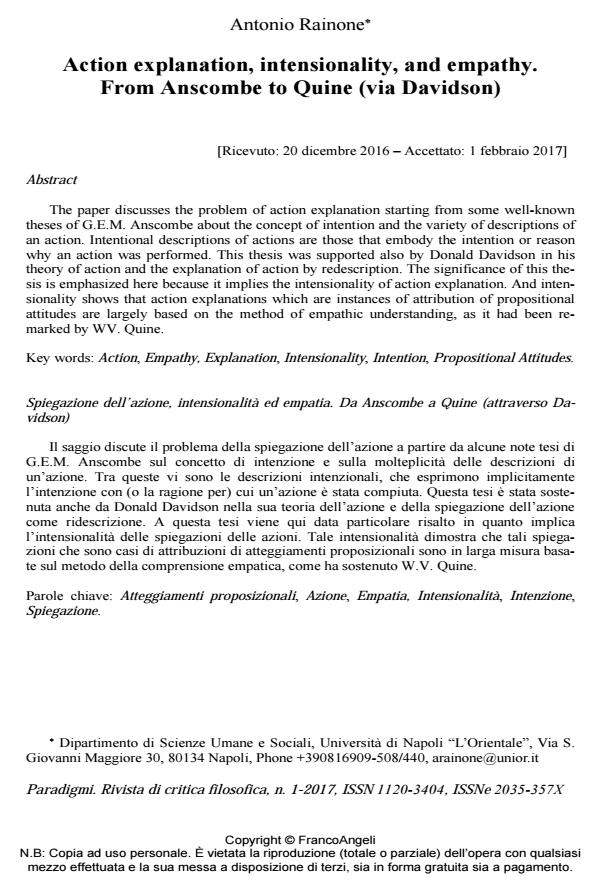Action explanation, intensionality, and empathy. From Anscombe to Quine (via Davidson)
Titolo Rivista PARADIGMI
Autori/Curatori Antonio Rainone
Anno di pubblicazione 2017 Fascicolo 2017/1
Lingua Inglese Numero pagine 12 P. 199-210 Dimensione file 205 KB
DOI 10.3280/PARA2017-001014
Il DOI è il codice a barre della proprietà intellettuale: per saperne di più
clicca qui
Qui sotto puoi vedere in anteprima la prima pagina di questo articolo.
Se questo articolo ti interessa, lo puoi acquistare (e scaricare in formato pdf) seguendo le facili indicazioni per acquistare il download credit. Acquista Download Credits per scaricare questo Articolo in formato PDF

FrancoAngeli è membro della Publishers International Linking Association, Inc (PILA)associazione indipendente e non profit per facilitare (attraverso i servizi tecnologici implementati da CrossRef.org) l’accesso degli studiosi ai contenuti digitali nelle pubblicazioni professionali e scientifiche
The paper discusses the problem of action explanation starting from some well-known theses of G.E.M. Anscombe about the concept of intention and the variety of descriptions of an action. Intentional descriptions of actions are those that embody the intention or reason why an action was performed. This thesis was supported also by Donald Davidson in his theory of action and the explanation of action by redescription. The significance of this thesis is emphasized here because it implies the intensionality of action explanation. And intensionality shows that action explanations which are instances of attribution of propositional attitudes are largely based on the method of empathic understanding, as it had been remarked by WV. Quine.
Il saggio discute il problema della spiegazione dell’azione a partire da alcune note tesi di G.E.M. Anscombe sul concetto di intenzione e sulla molteplicità delle descrizioni di un’azione. Tra queste vi sono le descrizioni intenzionali, che esprimono implicitamente l’intenzione con (o la ragione per) cui un’azione è stata compiuta. Questa tesi è stata sostenuta anche da Donald Davidson nella sua teoria dell’azione e della spiegazione dell’azione come ridescrizione. A questa tesi viene qui data particolare risalto in quanto implica l’intensionalità delle spiegazioni delle azioni. Tale intensionalità dimostra che tali spiegazioni che sono casi di attribuzioni di atteggiamenti proposizionali sono in larga misura basate sul metodo della comprensione empatica, come ha sostenuto W.V. Quine.
Parole chiave: Atteggiamenti proposizionali, Azione, Empatia, Intensionalità, Intenzione, Spiegazione.
Antonio Rainone, Action explanation, intensionality, and empathy. From Anscombe to Quine (via Davidson) in "PARADIGMI" 1/2017, pp 199-210, DOI: 10.3280/PARA2017-001014